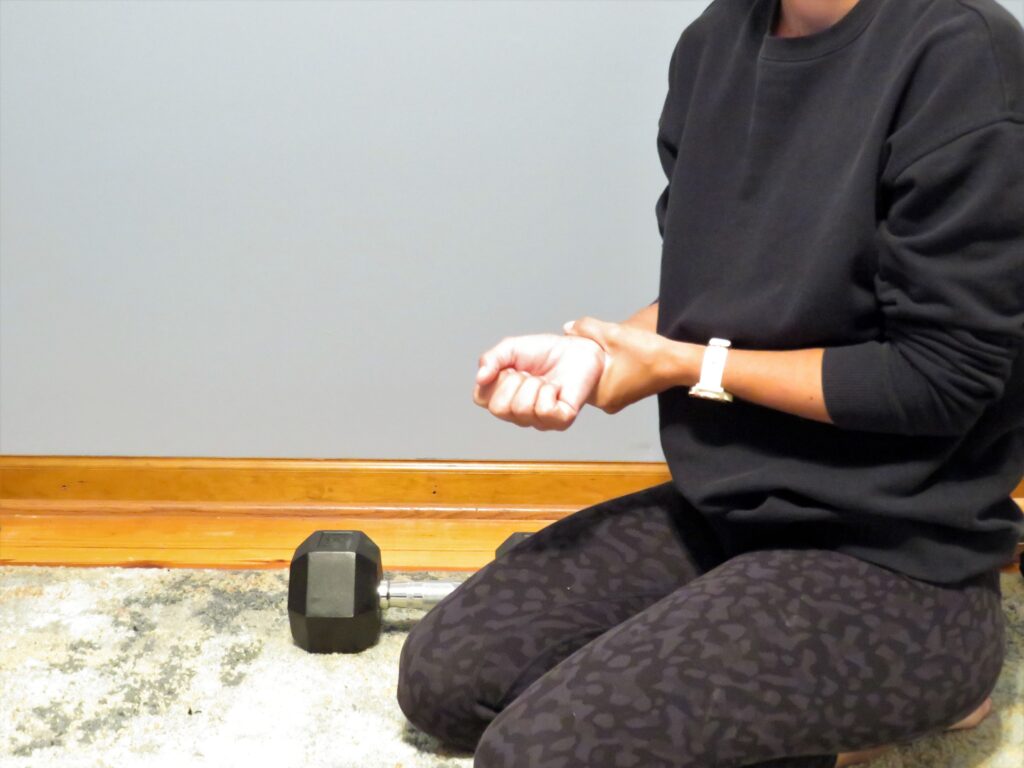
If you experience wrist pain during planks or push-ups, you are not alone. Depending on your specific situation, wrist pain during planks or push-ups can be the result of many different things. However, pain in your wrists can genuinely derail your plans to gain strength and be incredibly frustrating.
Fortunately, you have options. Making changes to how you do planks and push-ups can give you a short-term solution, and improving the flexibility and/or stability of your wrists can help facilitate long-term changes that decrease your wrist pain.
Cause of Wrist Pain During Planks or Push-ups
There are multiple different types of wrist pain during planks or push-ups which differ on the location of pain, and what specifically is causing it. Pain on the back of the wrist is one of the more common places where you might have pain when putting your weight in your hands. This discomfort can be due to a variety of causes, including abnormalities in the wrist structure.
However, wrist pain during planks or push-ups can also be a result of discomfort caused by daily habits. For example, wrist pain is higher in those with more smartphone usage. This indicates that how you spend your time and use your hands may be a piece of the puzzle when considering why you are experiencing wrist pain in general, and more specifically wrist pain during planks and push-ups.
Whether a direct result of how you use your hands and wrist or now, it is common to have wrist pain in a plank or push-up position due to the amount of flexibility and stability required to be in a balanced and stabilized position. Therefore, your pain may be a result of a lack of flexibility in the wrist and forearm or too much mobility paired with a lack of strength and stability (common with Hypermobility Spectrum Disorders and Ehlers-Danlos Syndrome).
If you are unsure of the cause of your wrist pain, it is best to see a physician who can help discover if there is an underlying problem that is the cause of your discomfort. However, if you have already been checked out and are looking for both short-term and long-term solutions to gaining flexibility and strength, read on.
Short-Term Solutions For Wrist Pain During Planks and Push-Ups
Getting back down to the ground and spending time on your hands often caused wrist pain. This is because your joints are not accustomed to the amount of weight and/or position. Ideally, over time your wrists can get more accustomed to it as you build the required strength, stability, and flexibility. Short-term solutions for wrist pain during planks and push-ups can help you while you are in this process.
Simple short-term solutions for pain during planks and push-ups include changing the position of your wrists. The change that is often most helpful is to decrease the amount of flexion in your wrist, or other words, straightening your wrist joint. There are two main methods of doing this.
- Elevating the palm
- Using dumbells or push-up bars
- Working on your fists
Elevating the palm of your hand is simple. You can use a wedge that you purchase or place a rolled-up towel, or something similar, under the palm.
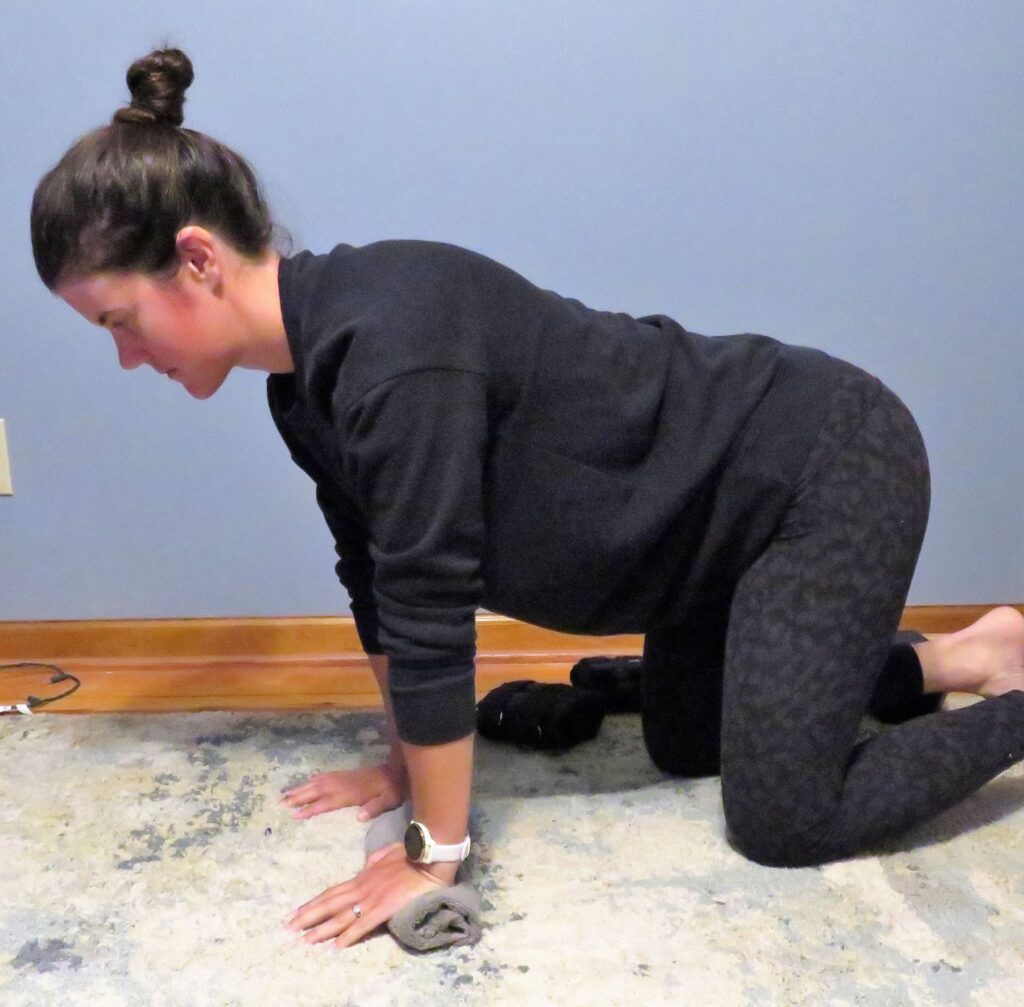
Dumbells or push-up bars will have a similar effect, When using either, ensure that your wrist joint is straight, meaning that you can draw a straight line from your knuckles, which are pointed at the floor, to your elbow.
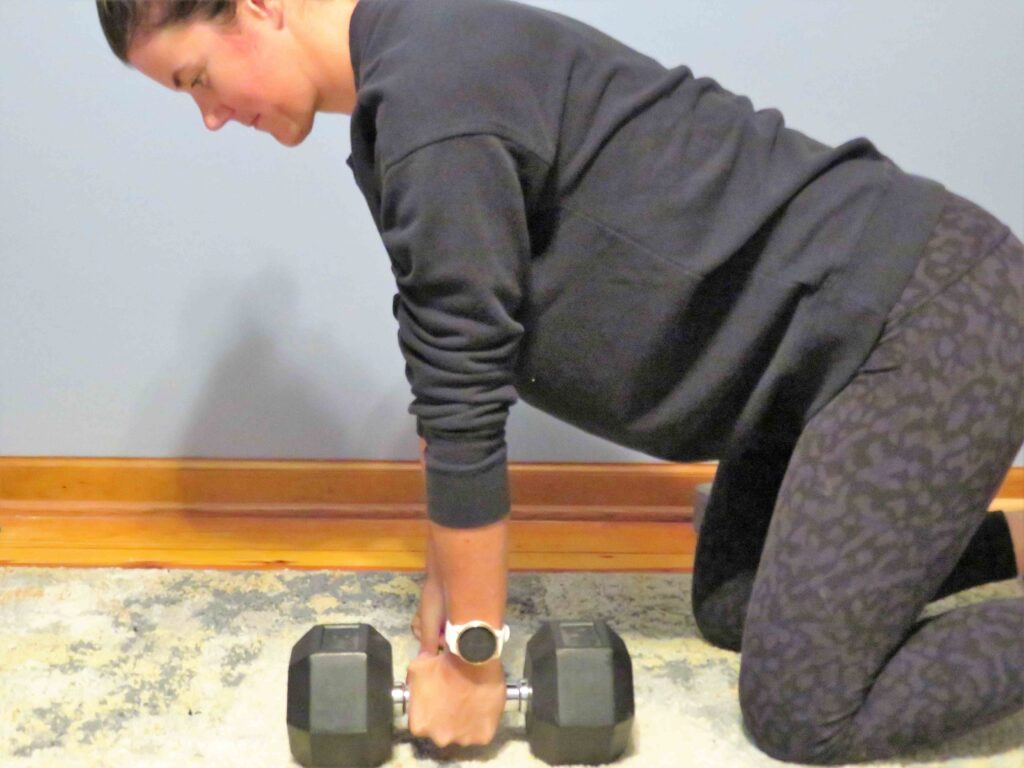
Working on your fists is also a great option. Similar to using a dumbbell or push-up bars, you must place your knuckles facing the ground, and keep a straight line from the knuckles and through the wrist. Keep your fingers closed to support your wrist.
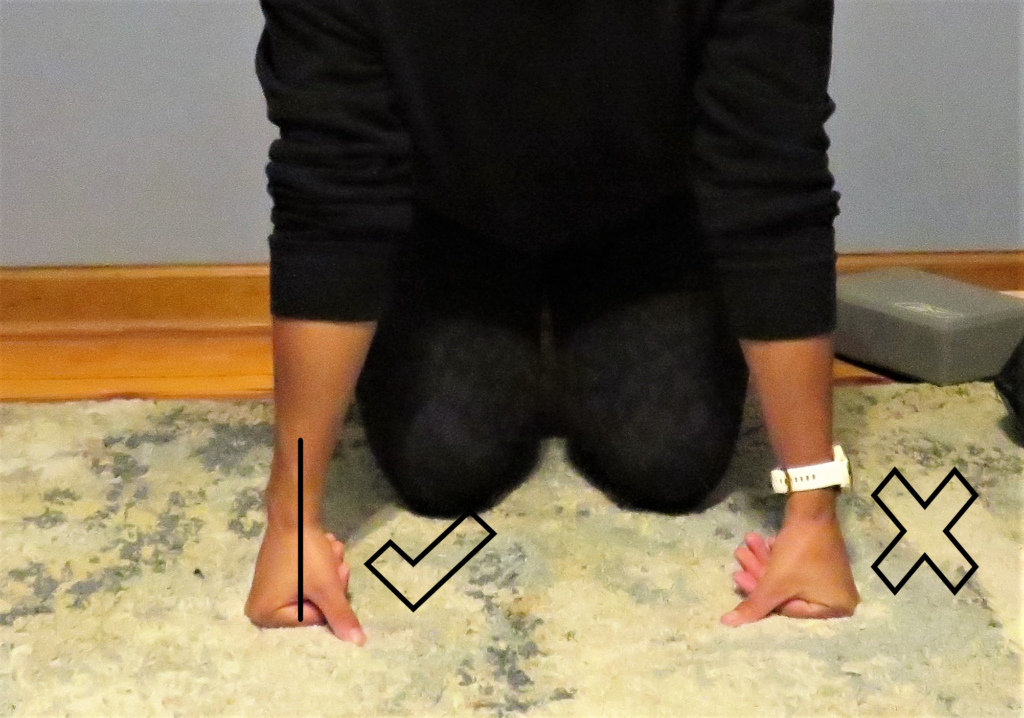
One of the most common mistakes on both push-up bars and on your fists is to let your wrists fall out when in a plank or push-up position. However, this can lead to feeling unstable and cause pain.
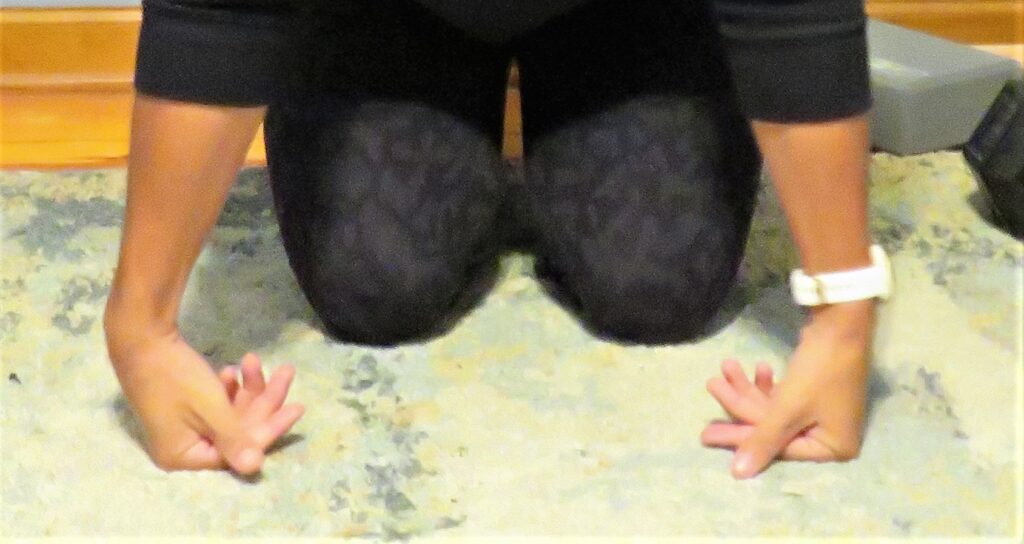
Long-Term Solutions For Wrist Pain During Planks and Push-Ups
The long-term solution for wrist pain during planks and push-ups will vary depending on the specifics of why you are having wrist pain. First, consider what factors might be contributing to your pain. Do you spend a lot of time typing or playing on your iPhone? If so, try decreasing this and see if you feel a difference in your wrist pain during planks and push-ups. Do you have chronically tight wrists? Or do you tend towards having loose and unstable wrists? Remember, the long-term solution will depend on what your specific needs are in a plank and push-up.
If you struggle with wrist pain due to a lack of flexibility, stretching can help. When you are stretching your wrists, remember to be cautious and take it slow so as to not irritate the joint. In the meantime use short-term solutions until you can put more weight on your wrists without pain. There are many methods of wrist mobility. A simple stretch that you can do during your workouts is as follows:
- Sit on your knees with your palms on the ground, fingers facing forward, with your palms next to your knees. If this position is uncomfortable, you can also place your hands on a desk or chair.
- If getting your hands flat on the ground feels like a good stretch, hang out there.
- As you get more mobility in your wrists, begin to straighten your arms and slowly shift your shoulders forward.
Alternatively, if you struggle with wrist pain due to a lack of stability and strength, the long-term solution includes learning to stabilize your upper body in a plank or push-up position. This begins by learning to stabilize your upper body while on your hands and knees with your muscles, rather than sinking into your joints, which is common for those with Hypermobility Spectrum Disorders.
Below is an exercise to start learning how to do this.
- Start on your hands and knees with your shoulders directly over your wrists
- Straighten your elbows
- Pull your shoulders down away from your ears, feeling the muscles in your armpits engage
- Gently push away from the ground through the entire palm of your hand, or fist, still feeling the muscles in your armpits engage
- If you feel any tension or pain in your neck or on the top of your shoulders, breathe and try again with less effort or with your hands elevated
Remember, gaining strength, stability, and/or flexibility takes time. If you find yourself feeling frustrated, try stepping away and coming back later. Additionally, for many, the long-term solution is to use a tool, like blocks or push-up bars that put your wrists in a more comfortable position. If this is true for you, that is ok. YOu can still get the benefits of planks and push-ups by using these aids long-term.
Finding Structure and Flexibility in Your Strength Training Program
Strength training can and will look different for each individual. Finding structure and flexibility that works for you is an important piece of the puzzle. It will allow you to use tools that help you relieve pain in the short-term while being consistent with your strength training. If you aren’t sure of what changes you need to make, getting help is a good option.
Clients at Integrative Strength & Movement work with Chelsea to learn new techniques that help them to build strength that helps them to relieve pain while integrating short-term solutions into their strength training. If you are struggling with wrist pain and want to get stronger, Chelsea can help. Email chelseawhalen.trainer@gmail.com to set up a free consultation and see if working with Chelsea is a good fit for you.